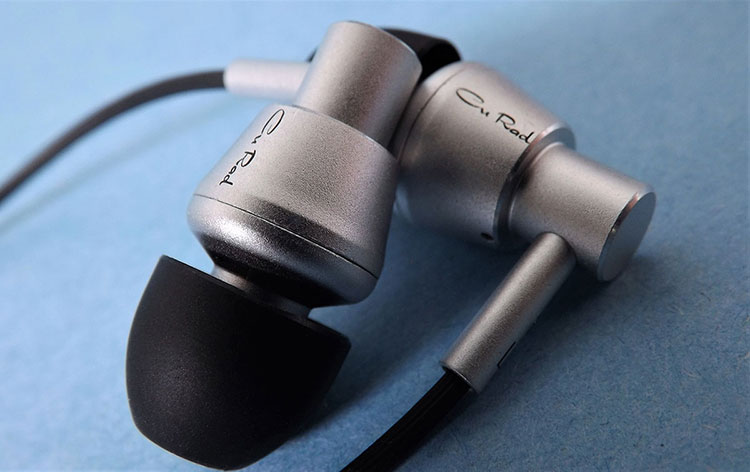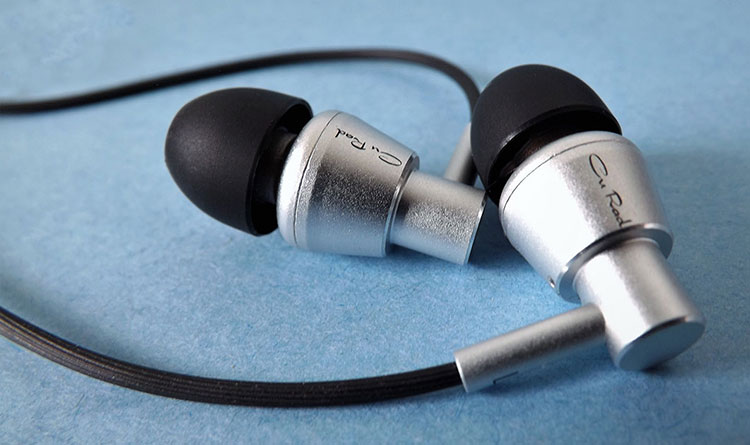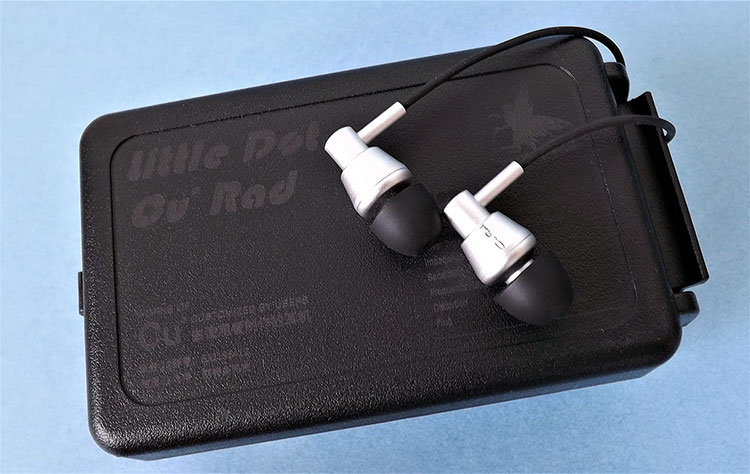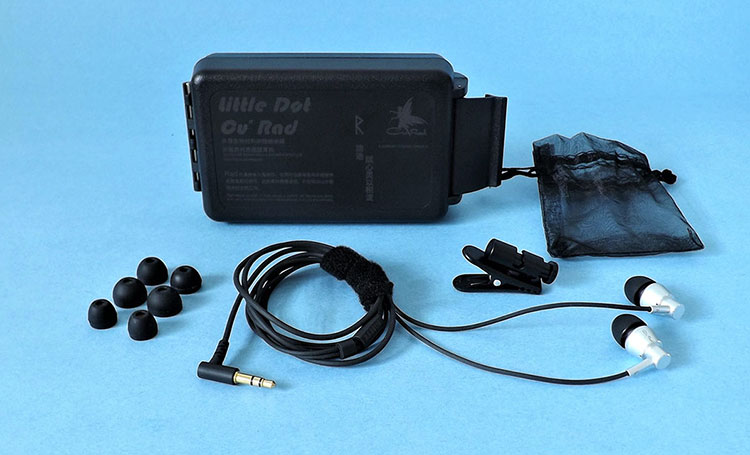The Little Dot Cu Rad is an entry-level single multilayer biomaterial dynamic driver universal IEM rated at 16Ω and 103dB SPL. It is priced at $69.99
Disclaimer: The Little Dot Cu Rad sent to us is a sample in exchange for our honest opinion in this review. We thank the team at Little Dot for giving us this opportunity.
To read more about our IEM reviews previously done on Headfonics please click here.
Note, this review follows our new scoring guidelines for 2020 which you can read up on here.
Product Introduction
Little Dot is mostly known for its excellent line of tube amplifiers but recently they decided to try their skills and embark on a journey of making IEMs.
So we also decided to embark on a Little Dot audiophile four-part journey of our own. Little Dot sent us all four IEMs in their lineup and we will start with their budget model upwards to their top of the line model.
The journey is going to start with the Little Dot Cu Rad single dynamic driver IEM. This will begin our Audiophile journey upwards to the top.
Rad is the fifth rune in Elder Futhark. It means a ride or journey in Old English. I did some research and found Raido to also be the fifth rune in Proto-Germanic as well as Reio in old Norse. Rad is also the old Germanic word for wheel.
The Little Dot Cu Rad is an earbud IEM made for those who want to get their feet wet in the audiophile game for very little money. Little Dot promises the best audiophile sound at this price point. let us get the wheels in motion.
Tech Inside
The Driver
The Little Dot Cu Rad is a limited edition run and only 2600 units will be made so get them while you can. That is because Little Dot obtained only 6300 of these high-quality drivers.
After pairing and screening, they decided to create the Cu Rad with these high-quality drivers at a modest price and Little Dot labeled them as the ultimate beginner IEM. These drivers are a 10mm dynamic driver. The drivers are made with a multi-layer biomaterial with a nanoscale outline composite diaphragm.
The drivers have four layers at the inner circle with a two-coil drive system. Rarely do we see a driver with this much technology go into such an inexpensive earbud. There are other drivers out there which are made of a biomaterial and those are Tesla drivers which are very expensive.
Specifications
The frequency response given by Little Dot is 15hz to 20khz. These are more potent in bass response over the rest of the spectrum and they did audibly go below 20hz in the tone generator test.
Distortion levels are given as 0.01% at 1khz but no power is listed and not even a power handling rating is listed. The Cu Rad seems to handle power very well and I would say its safe to use with a 1 watt or perhaps higher headphone amplifier.
An impedance of 16 ohms with a sensitivity rating of 103 decibels pretty much assures that these will work just fine with low power and they do work well connected directly to low power sources such as mini DACs or a direct phone output.
Design
The Little Dot Cu Rad uses an aluminum CNC housing that is very utilitarian. Not much to say here about it. Venting holes can be seen on the aluminum matte-finished shells and the Cu Rad marking.
They weigh very little and are very comfortable. Plain and simple is sometimes a good thing and I prefer it over complexity sometimes. They have a standard size nozzle so you can use most any aftermarket flanges.
They do not have strain reliefs on the wire but have a stem made of aluminum. This is where you will find L and R markings to identify each side.
I would have preferred some color or perhaps colored end caps to easily distinguish the left and right sides. Frail eyes might have problems seeing these marks well especially in dark areas.
Stock Cable
The Little Dot Cu Rad is a wired IEM and does not have a removable wire. The total attached wire length is about 48 inches. The wire is a decent quality 6N OFC inside a rubber tube jacket with an 18k gold-plated 3.5mm TRS jack.
It is a simple wire and is very basic. There is no mic and no player controls. There are some microphonics present but to be honest these have less than others tested previously and are not too bad in this area.
Packaging & Accessories
The Little Dot Cu Rad comes in a small box three by six inches approximately. Inside you will find a hardshell case with the product information etched on the surface. Besides the hard case and the earbuds, you will find a mesh cloth bag with three size set of flanges plus a medium preinstalled making it a total of four sets.
I looked around and it seems even Little Dot forgot to mention that you also get a wire clip. I never use them but some people do and it is a nice gesture in part of Little Dot to include one.
Sound Impressions
To be honest I was not expecting such good sound quality from the looks of the Cu Rad simplistic shells. I thought they were going to sound like budget earbuds. I was wrong and looks can be deceiving at times. The sound is quite pleasant at the price point.
These have a very slight V-shaped sound signature with the bass frequencies emphasized more on the lower end of the spectrum which is my personal preference in tuning over a bloated midbass V.
Midrange wise, the volume and presence are quite adequate for being V-shaped and total frequency response variations are less than 10 decibels overall. The highs have some elevated points in the lower regions of the high frequencies.
My usual tone generator test revealed a few points of shifting but nothing significant. I am not gonna list the frequencies because the differences were minimal of perhaps only a few decibels and did not affect the overall sound quality.
This pair was broken in for at least 20 hours before making any sound judgments and transient response did improve with use some. These are a bit sluggish at first so give them time. They do improve with time and use.
Bass
As mentioned earlier the bass has a slight elevation starting at about 60hz and below. There is no midbass bleed because the elevation is mostly in the lower octaves of the bass response.
The bass is surprisingly good for this price range. The bass has some weight and decent definition and a medium amount of impact. There is a slight lack of body though and does not have much emotion like the upper tier of their lineup.
Speed response I would just classify as decent with just a very slight amount of overhang.
The bass does well with dance, EDM, and hip hop. I popped in Technical Itch Theseus and it handled the bass portion very well at high volume levels. That is a feat in itself. These can take quite a large bass boost.
Mids
The Little Dot Cu Rad midrange is pushed back slightly, approximately five decibels from the rest of the frequency spectrum. The midrange for the most part is smooth and non-piercing with a decent tonality. Just a touch of raspiness in loud passages at times was perceived but only at very high volume levels.
The detail in the midrange is pretty good and everything is well represented. I would call it sound with no drama and nothing shouts at you. Tone distinction is good also and nothing mingles into one another. Instrument and vocals stay distinct, coherent, and identifiable at all times with very little congestion except at very high volume levels.
Treble
The Little Dot Cu Rad highs are for the most part sharp but they do roll off early starting at about 13khz. There is also a peak at around 6 to 7khz which is what gives this set some brightness in the top end.
The Little Dot Cu Rad highs are clear enough to hear, have some air and clarity but again a slight amount of raspiness is present but is not perceived so much because of the early roll-off. In my opinion, the high frequencies should be left stock with no equalization due to them not taking a boost well in those frequencies, unlike the bass.
Staging
The Little Dot Cu Rad soundstage is a touch wide with a medium amount of depth, with just a hint of height. I would consider these average in this area.
Left to right panning sounds somehow misses the center spot while being able to remain centric with vocalists and central sound placement. This is probably due to the shifting described earlier.
The Cu Rad is not the best at imaging accuracy but they make it up with good tonality and an enjoyable sound signature.
Synergy
The Little Dot Cu Rad will work on anything. A Sansa, your phone, a micro DAC, and it will scale well gaining impact when fed more power.
I used the Cu Rad with small amplifiers such as the Zorloo Ztella and with an IFI Zen Can that can output 1.6 watts with no issues in both scenarios. The Ztella had enough power to drive them adequately and so did my Motorola phone.
They are finicky with flange selection and even in-ear placement. I notice major differences in sound signature by just changing the depth of the flanges inside my ears. These changes were pretty substantial.
Selective Comparisons
BGVP Zero
The recently reviewed BGVP Zero has a different multi-driver configuration but at almost the same cost. Accessory wise the Zero gives you more plus the feature set is more extensive. You get more flanges and a higher quality removable wire with a microphone.
The Zero has a smoother characteristic, especially in the midrange. They have a recessed top end and are not as potent in the bass, however. Where the BGVP Zero excels is in the smoothness in the midrange with no harshness. But the Cu Rad is better at all the rest, especially in the bass. The Cu Rad is harder hitting.
The Cu Rad has a more exciting sound signature with more slam that does well with heavy bass recordings and impactfulness but if you want a more relaxed sound then go Zero.
Hifiman RE600S version 2
Now here is a pretty even fight. Of recent, this set can be obtained for close to the same cost as the Cu Rad at present. They both have a single dynamic driver with an attached wire. Package and accessories go to the Hifiman RE600S off the bat.
Soundwise, the RE600S is a flatter set with better midrange response and better highs But not by much. they have higher power requirements more so compared to the Little Dot Cu Rad. The RE600S likes power and will sound better with a higher power amplifier. They tend to scale better.
The Hifiman set will extend better in the highs but is what was said before, the sound signature is flatter and needs some equalization to gain some excitement factor while the bass on the Cu rad is more present in stock tuning. I prefer the bass on the Cu Rad.
TRN VX
Here we have a very popular IEM. The feature set is almost the same as the Cu Rad when it comes to flanges and accessories. However, the TRN VX has a removable wire and a seven driver configuration and all for a very low price.
Are more drivers better? Sometimes it is but not In this case. The seven drivers image better with better placement, with a slightly wider sound and a more accurate side to side sweep.
Tonalitywise these have undeniable differences. Although the midrange on the Cu Rad gets raspy at high volume levels they tend to have a more accurate tonal balance.
The VX tends to bleed the midbass into the midrange and the midrange has a slightly nasal tonality while the Rad sounds more natural.
There is no doubt the bass on the Cu Kis is way better and can go deeper, louder, and cleaner. The bass on the VX tends to break up with higher volume levels. The Cu Kis also handle way more power. I detected driver breakup on the VX while the Cu Rad handles power and a bass boost like a boss.
Our Verdict
If you have a bargain-basement headphone, IEM, or an inexpensive earbud and wanna step up to better sound quality over the basic budget sets then these were made for you particularly. You cannot go wrong with these.
The Little Dot Cu Rad Is not for the ardent Audiophile. These are for people who are running those budget earbuds and want to step up in sound quality and a big step up in sound quality it is.
But be warned, these are like a gateway drug. Once you hear these and start realizing the difference between bad and good sound there is no turning back. That is where your pursuit for the perfect sound begins and it will probably never end.
Endgame is not what is promised here. What is promised here is good sound at a great price and Little Dot did this very well. The Little Dot Cu Rad sound quality has a general appeal that I bet most will be very happy with.
Little Dot Cu Rad Specifications
- Driver: 10mm Composite Diaphragm Dynamic
- Distortion: <0.01% at 1000hz
- Impedance: 16 ohms
- Plug: 3.5mm
- Frequency Range: 15hz to 20khz
- Sensitivity: 103 +/- 3db








